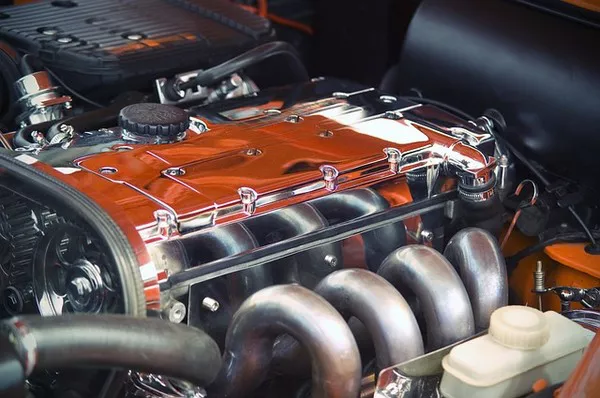The air conditioning (AC) system in a car plays a vital role in ensuring comfort for passengers, especially during hot weather. At the heart of this system is the AC compressor, which compresses refrigerant gas to create the cooling effect. Understanding how much pressure the car AC compressor generates is essential for diagnosing issues, performing maintenance, and ensuring optimal performance.
What is an AC Compressor?
The AC compressor is often referred to as the “heart” of the air conditioning system. Its primary function is to compress the refrigerant gas and circulate it throughout the AC system. The compressor transforms low-pressure refrigerant gas into high-pressure gas, allowing it to move to the condenser, where it is cooled and converted back into liquid.
How Does the AC Compressor Work?
The AC compressor operates using several key components:
Suction Line: This line carries low-pressure refrigerant gas from the evaporator to the compressor.
Compressor: Inside the compressor, the refrigerant is compressed, raising its pressure and temperature.
Discharge Line: This line carries high-pressure refrigerant gas from the compressor to the condenser.
The compressor works through a cycle of suction, compression, and discharge. When the AC system is activated, the compressor begins to draw in low-pressure refrigerant gas, compresses it, and then sends it out as high-pressure gas.
Pressure Levels in a Car AC System
The pressure generated by a car AC compressor varies based on several factors, including the type of refrigerant used, ambient temperature, and system design. Generally, pressure readings can be classified into two categories: low pressure and high pressure.
Low Pressure Side: The low-pressure side of the system typically operates between 25 to 35 psi (pounds per square inch). This pressure represents the refrigerant as it returns from the evaporator to the compressor.
High Pressure Side: The high-pressure side usually operates between 200 to 300 psi. This pressure is seen after the compressor has compressed the refrigerant and sent it to the condenser.
These pressure ranges can vary based on specific vehicle models and environmental conditions. Always refer to the manufacturer’s specifications for precise measurements.
Factors Affecting Compressor Pressure
Several factors can influence the pressure levels in a car AC compressor:
Refrigerant Type: Different refrigerants, such as R-134a or R-1234yf, have different pressure characteristics. The type of refrigerant affects how the system operates and the pressures involved.
Ambient Temperature: Higher outdoor temperatures can lead to increased pressure readings. As the temperature rises, the refrigerant expands, resulting in higher pressures in the system.
System Efficiency: A well-maintained AC system will operate within normal pressure ranges. If the system has leaks, blockages, or malfunctioning components, the pressures may deviate from the norm.
Compressor Condition: An aging or failing compressor may not generate the proper pressures, leading to inadequate cooling.
Evaporator and Condenser Conditions: The performance of the evaporator and condenser can affect the overall pressure. If either component is dirty or blocked, it can disrupt the pressure balance in the system.
Why is Understanding AC Pressure Important?
Knowing the pressure levels in your car’s AC system is crucial for several reasons:
Diagnosing Issues: Abnormal pressure readings can indicate problems such as leaks, blockages, or compressor failure. Regular pressure checks can help identify issues early.
Preventive Maintenance: Keeping track of AC pressure can help maintain the system’s efficiency. Routine checks can prevent costly repairs down the line.
Safety: Operating an AC system with incorrect pressures can lead to system failure or even accidents. Ensuring the system operates within specified pressure ranges is essential for safety.
Efficiency: Proper pressure levels contribute to the overall efficiency of the air conditioning system. Maintaining correct pressures ensures optimal cooling performance.
How to Measure AC Pressure
To measure the pressure in a car’s AC system, you will need a set of manifold gauges. Here’s a step-by-step guide:
Prepare the Vehicle: Start the car and turn the AC system to its maximum setting. Ensure the vehicle is in a safe location.
Connect Manifold Gauges: Attach the blue (low-pressure) gauge to the suction line service port and the red (high-pressure) gauge to the discharge line service port.
Read the Gauges: Observe the pressure readings on both gauges. Compare them with the manufacturer’s specifications.
Analyze the Results: If the pressures are outside the normal range, further investigation may be needed.
Common AC Issues Related to Pressure
Several common problems can occur when the AC compressor pressure is not within normal ranges:
Low Refrigerant Levels: If there is a refrigerant leak, the low-pressure side will show lower than normal readings.
Blocked Expansion Valve: A blockage can cause high pressure on the low side and low pressure on the high side.
Compressor Failure: A failing compressor may not produce enough pressure, leading to poor cooling.
Dirty Condenser: A dirty condenser can hinder heat exchange, resulting in high pressures on the high side.
See Also The Smallest Air Compressor You Can Buy
Conclusion
The pressure generated by a car AC compressor is a critical component of the vehicle’s air conditioning system. Understanding the normal pressure ranges, factors affecting pressure, and how to measure it can help vehicle owners maintain optimal AC performance. Regular maintenance and monitoring of the system will ensure a comfortable ride, especially during hot summer months. Always consult with a professional mechanic for any significant concerns related to AC pressure and performance. By being proactive, you can avoid costly repairs and enjoy a consistently cool and comfortable driving experience.
You Might Be Interested In

